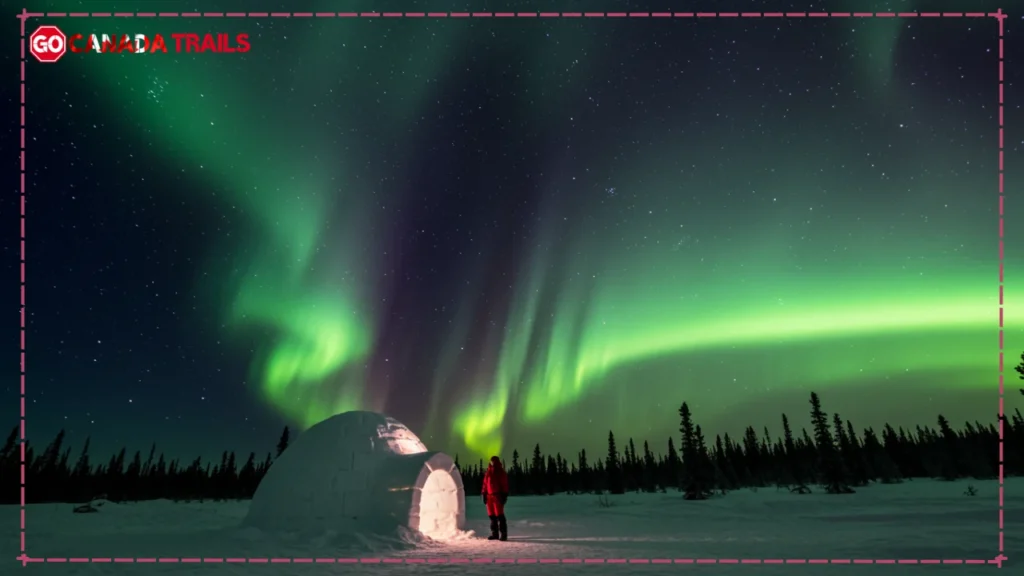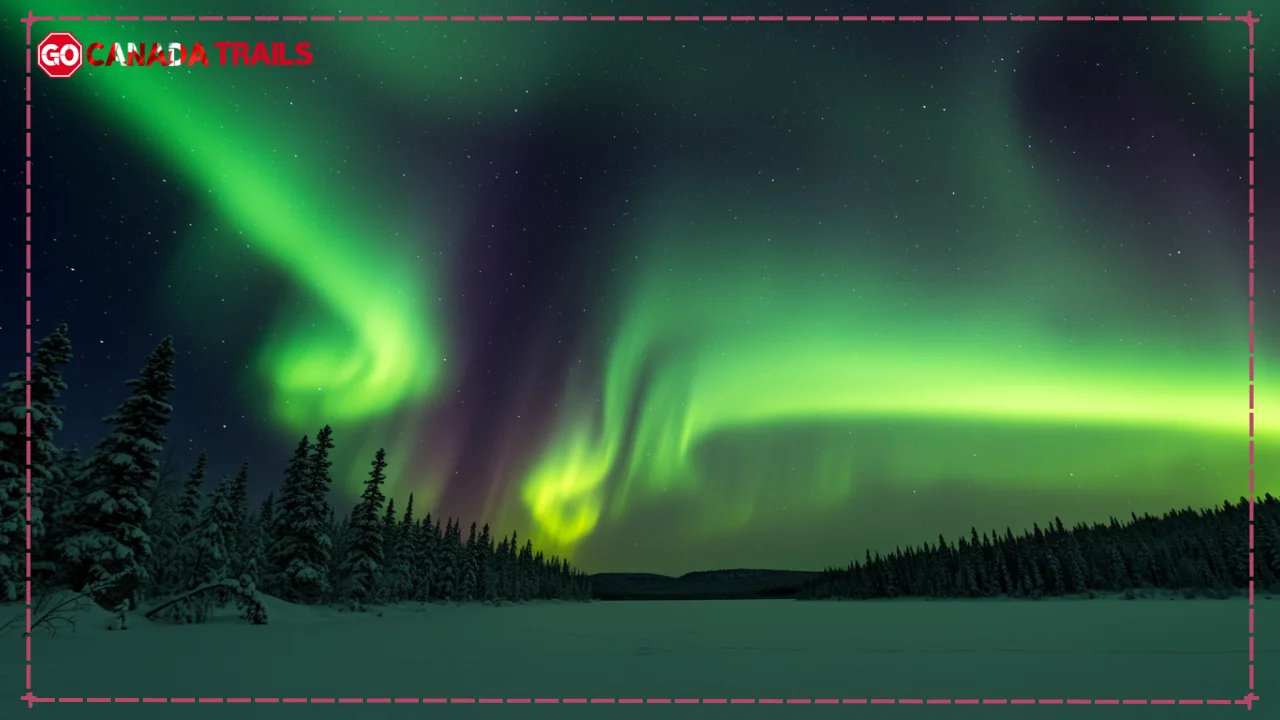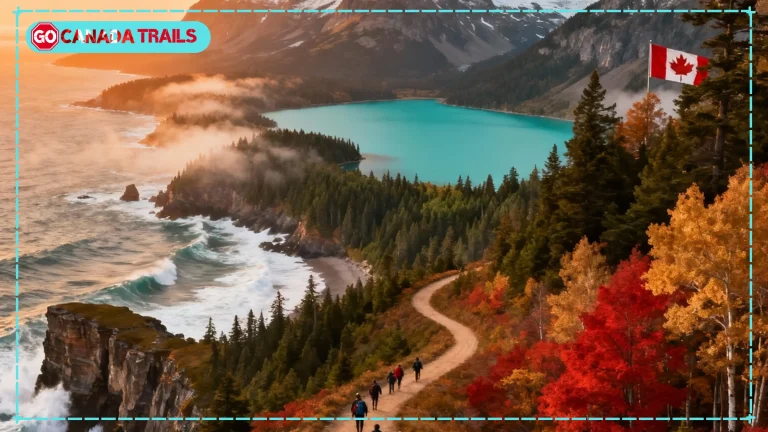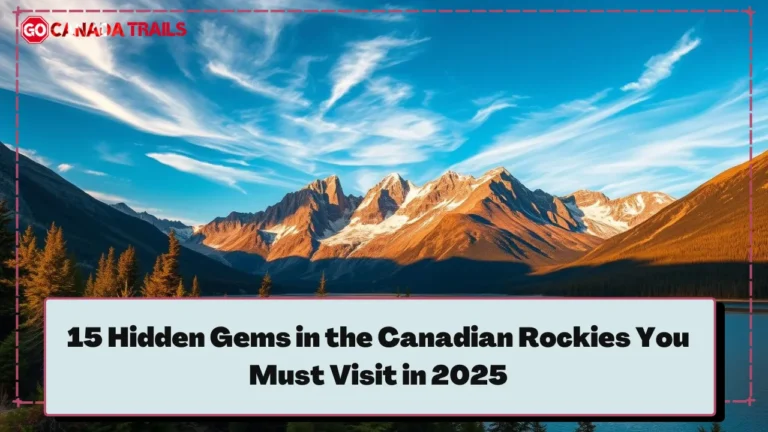Best Time to See Northern Lights in Canada: Your Ultimate Guide to Chasing the Aurora Borealis
Best time to see northern lights in Canada is a question that sparks excitement and curiosity among travelers. Imagine standing under a vast, ink-black sky as ribbons of emerald green, violet, and pink dance overhead, painting the night with an otherworldly glow. This is the magic of the northern lights, or aurora borealis, a natural phenomenon that draws dreamers and adventurers from around the world to Canada’s frozen frontiers. If you’re an American traveler planning your bucket-list trip, timing your visit to catch this celestial show is crucial—get it wrong, and you might miss out entirely. In this comprehensive guide, we’ll dive deep into the best time to see northern lights in Canada, blending the latest scientific data, expert insights, and practical tips to help you maximize your chances. With Solar Cycle 25 reaching its peak in 2025, aurora activity is surging, making now an unprecedented time to go. We’ll cover everything from seasonal breakdowns to location-specific advice, ensuring you have all the tools for an unforgettable experience.
As a travel blogger specializing in Canadian adventures, I’ve chased the aurora across the country and spoken with astronomers, tour guides, and fellow travelers. Timing is everything when it comes to the best time to see aurora borealis in Canada—factors like solar activity, weather, and moon phases can make or break your trip. This guide leverages real-time data from sources like NOAA’s Space Weather Prediction Center and aurora forecasting apps to give you actionable, up-to-date advice. Whether you’re a first-timer or a seasoned chaser, let’s unlock the secrets to finding the best time and place to see northern lights in Canada.
🌌 The Quick Answer: When is the Best Time to See the Aurora in Canada?
For those scanning for quick facts (hello, Google’s AI Overview!), here’s the essentials in a nutshell. This section is your go-to for snappy, snippet-friendly info on the best time to see northern lights in Canada.
Key Info Box:
- Best Season: Late August to mid-April, when nights are long and dark enough for optimal viewing.
- Peak Months: September through March, offering the longest periods of darkness and higher aurora frequency.
- Best Time of Night: Between 10:00 PM and 2:00 AM local time, when the aurora is most active.
- Critical Factor for 2025: We’re nearing the peak of Solar Cycle 25, boosting aurora intensity to levels not seen in over a decade—expect more frequent and vivid displays through 2026.
In short, if you’re plotting your trip, aim for winter’s heart (November to March) for the highest odds, but don’t overlook autumn or spring for milder weather. According to recent data from the University of Alaska’s Geophysical Institute, aurora visibility in Canada spikes during solar maximums like the one we’re in now, with activity up 20-30% compared to quieter years. Keep reading for a deeper dive.
📅 A Breakdown of Canada’s Northern Lights Seasons
Canada’s vast northern latitudes make it one of the world’s premier destinations for aurora hunting, but the best time to see northern lights in Canada varies by season. The aurora borealis occurs when charged particles from the sun collide with Earth’s atmosphere, creating those stunning light shows. However, visibility depends on dark skies, clear weather, and solar activity. Let’s break it down by season, with pros, cons, and tips tailored for U.S. travelers (think easy flights from hubs like Seattle or Chicago).
Autumn (Late August – October): The Milder Viewing Window

Autumn kicks off the aurora season with a gentle introduction, making it ideal for those wary of extreme cold. As summer fades, nights lengthen, providing about 8-10 hours of darkness by late September. This is often hailed as a sweet spot for the best time to see aurora borealis in Canada if you prefer comfortable temps—think highs in the 40s°F (5-10°C) during the day, dropping to freezing at night.
Pros:
- Warmer weather means less bulky gear; you can hike or canoe during the day without frostbite worries.
- Unfrozen lakes reflect the lights like mirrors, creating double the spectacle—photographers love this!
- Fewer crowds compared to peak winter, with lower accommodation costs (e.g., a Yellowknife hotel might run 250 in January).
Cons:
- Shorter dark periods limit viewing windows; by October, you’re competing with lingering twilight.
- Unpredictable weather can bring rain or early snow, clouding skies.
Data from AuroraWatch shows that September has a 25-30% chance of aurora sightings on clear nights in northern Canada, rising as the month progresses. For Americans, this is a great time for a road trip extension—fly into Vancouver and drive north, combining city vibes with wilderness. Tip: Pack layers and check apps like Aurora Forecast for real-time alerts. One traveler I met from New York described her October trip to Yukon as “magical but misty”—she saw faint lights over a glassy lake but wished for clearer skies.
Winter (November – March): The Prime Aurora Season

If you’re serious about the best places to see northern lights in Canada, winter is your golden ticket. This period boasts the longest nights—up to 18 hours of darkness in places like Yellowknife—aligning perfectly with peak aurora activity. Stats from NOAA indicate that winter months see 40-50% more aurora events due to Earth’s tilt and solar wind patterns.
Pros:
- Statistically the highest chance of sightings; December and January often hit Kp-index levels of 5+, meaning intense, widespread displays.
- Iconic snowy backdrops enhance the experience—imagine lights swirling over igloos or frozen tundras.
- Unique activities like dog sledding or ice fishing pair beautifully with night viewing.
Cons:
- Brutal cold: Temps can plummet to -40°F (-40°C), demanding high-quality gear like thermal boots and parkas (budget $200-500 for rentals).
- Shorter days mean limited daytime exploration, and blizzards can ground flights.
For U.S. visitors, direct flights from Minneapolis to Winnipeg make accessing Manitoba easy. A 2023 study by the Canadian Space Agency noted that winter aurora displays lasted an average of 2-3 hours per night during solar peaks. Quote from astronomer Dr. Eric Donovan: “Winter’s darkness is the canvas for the aurora’s masterpiece.” Personal tip: Join a guided tour for heated viewing spots—it’s worth the splurge to avoid hypothermia.
Spring (Late March – April): The Equinox Effect

As winter thaws, spring brings the “equinox effect,” where Earth’s magnetic field aligns favorably with solar winds, boosting aurora intensity around the March equinox. This makes late March a contender for the best time and place to see northern lights in Canada, with milder weather easing travel.
Pros:
- Warmer temps (20-40°F/-6 to 4°C) allow for comfortable outdoor waits.
- Higher probability of geomagnetic storms, leading to vivid, colorful displays—think purples and reds alongside greens.
- Transitioning landscapes: Melting snow reveals budding wilderness, perfect for photographers.
Cons:
- Nights shorten rapidly (down to 10 hours by mid-April), squeezing viewing time.
- Variable weather with possible slush or fog.
According to SpaceWeatherLive, equinox periods see a 20% uptick in aurora strength. For Americans, this is prime for shoulder-season deals—flights from Denver to Calgary can be under $300 round-trip. A reader from California shared: “April in Jasper was crisp but rewarding; we caught a storm that lit up the Rockies like fireworks.”
📍 Best Times by Location: Where You Go Defines When You Go
The best places to see northern lights in Canada aren’t just about latitude—they’re about clear skies, low light pollution, and accessibility. Canada’s “Aurora Oval” stretches across the north, but each spot has optimal windows. Here’s a location-by-location guide, with data from DarkSky International and local tourism boards.
Northwest Territories (Yellowknife): The Aurora Capital of the World
Yellowknife, perched on Great Slave Lake, claims over 200 aurora-viewing nights per year, thanks to its position under the auroral oval and 70% clear-sky rate. It’s the best time to see northern lights in Canada from mid-November to early April, when darkness peaks and temps hover at -20°F (-29°C).
- Best Months: Mid-November to April; January often sees the most intense shows.
- Why Here? Designated Dark Sky Preserve with minimal pollution; combine with indigenous cultural tours.
- Tips for Americans: Fly direct from Seattle (under 4 hours); budget $1,000-2,000 for a 4-night trip including tours.
In 2024, Yellowknife reported a 15% increase in sightings due to solar maximum. Table of average sightings:
| Month | Avg. Clear Nights | Aurora Probability |
|---|---|---|
| Nov | 20 | 60% |
| Jan | 25 | 75% |
| Mar | 22 | 65% |
Yukon (Whitehorse & Dawson City): Rugged Wilderness and Gold Rush History
Yukon’s vast, unspoiled landscapes make it a haven for adventurers. Whitehorse offers urban comforts, while Dawson City adds historic charm. The best time to see aurora borealis in Canada here is September to mid-April, with September’s mild weather ideal for beginners.
- Best Months: September (for reflections on rivers) to March (for snowy vistas).
- Why Here? Remote spots like Kluane National Park provide pitch-black skies; pair with hiking or hot springs.
- Tips: Drive from Alaska if you’re road-tripping; expect $800-1,500 for accommodations and rentals.
Data shows Yukon’s aurora season extends longer due to its western position, with apps like My Aurora Forecast predicting 30-40% more activity in 2025.
Alberta (Jasper & Banff): Dark Sky Preserves
Nestled in the Rockies, Jasper and Banff are UNESCO Dark Sky Preserves, minimizing light pollution for crystal-clear views. October to March is prime, aligning with the best time and place to see northern lights in Canada for mountain lovers.
- Best Months: October (fall colors) to March (snow-capped peaks).
- Why Here? Stunning alpine settings; stargaze from hot tubs or gondolas.
- Tips: Train from Vancouver for scenic entry; U.S. visitors note easier access via Calgary (flights from LAX ~$200).
A 2023 Parks Canada report highlighted Jasper’s 50+ aurora nights annually during winter.
Manitoba (Churchill): The “Polar Bear and Aurora” Combo Trip
Churchill, on Hudson Bay, doubles as a polar bear hotspot. January to March offers the best time to see northern lights in Canada alongside wildlife.
- Best Months: Jan-Mar for dual sightings; February peaks with 80% aurora odds on clear nights.
- Why Here? Subarctic tundra; tours combine bears and lights.
- Tips: Fly from Winnipeg; bundle up for -30°F temps.
NOAA data confirms Churchill’s high geomagnetic activity, making it a unique pick.
🔬 How to Use Science to Pinpoint the Perfect Night
Beyond seasons, science is your ally in nailing the best time to see northern lights in Canada. Let’s geek out on the factors.
The Solar Cycle: Why 2025/2026 is a Special Time
The sun follows an 11-year cycle of activity, peaking every decade. We’re in Solar Cycle 25, with maximum expected in 2025—sunspots and solar flares are at their highest since 2014, supercharging auroras. NASA predicts 30-50% more events, extending visibility southward. For U.S. travelers, this means potentially seeing lights from northern states, but Canada’s spots remain superior.
The Kp-Index: Your Secret Weapon for Forecasting
The Kp-index measures geomagnetic activity on a 0-9 scale. Aim for 4+ for visible auroras; 5+ means spectacular shows. Download the Aurora Alert app or check SpaceWeatherLive. Tip: Set notifications for spikes—I’ve caught displays by monitoring mid-trip.
The Moon Cycle: Plan for Darkness
A full moon washes out faint lights, so target new moon phases for true darkness. Use this moon phase calendar to plan. Data shows sightings double during new moons.
The Weather Forecast: Your Final Check
Clouds block 70% of potential views, per meteorological studies. Use ClearDarkSky or local forecasts; aim for high-pressure systems. Pro tip: Book flexible itineraries.
✅ Your Ultimate Northern Lights Timing Checklist
Here’s a scannable checklist to plan your trip:
- Step 1: Choose your season (Autumn for mildness, Winter for peaks, Spring for intensity).
- Step 2: Select a month and target the week of the New Moon for darkest skies.
- Step 3: Pick a destination known for clear skies (e.g., Yellowknife for reliability, Yukon for adventure).
- Step 4: Plan for a trip of at least 3-4 nights to increase your odds—stats show 80% success rate over multiple nights.
- Step 5: Download an aurora forecast app like Aurora Forecast and monitor it daily on your trip.
❓ People also ask
What time will I see the northern lights in Canada?
The Northern Lights are best seen in Canada between late August and mid-April, especially from November to March. On any given night, the best time to look is between 10 PM and 2 AM, often peaking around midnight.
To see them, you need:
Darkness: Get away from city lights.
Clear Skies: No clouds or rain.
Good Solar Activity: Check aurora forecasts online.
Top spots in Canada include Yellowknife, Churchill, Whitehorse, and Jasper National Park. Plan for a few nights to increase your chances, as they are unpredictable.
Which month is best for the northern lights?
The best time to see the Northern Lights, also known as the aurora borealis, is generally from late August to mid-April. This period is often referred to as the “aurora season” because the nights are long and dark enough at high latitudes for the phenomenon to be visible. While auroras occur year-round, they are weaker than sunlight, making sightings impossible during the brighter summer months (May to July and most of August).
What is the best time for a northern lights trip?
The best time for a Northern Lights trip is between late September and late March.
According to www.iAsk.Ai – Ask AI: This period offers long, dark nights essential for seeing the aurora. While December to February are prime months due to maximum darkness, March and September are also excellent because increased solar activity around the equinoxes often leads to stronger displays. For the best viewing, aim for clear skies, away from city lights, typically between 9 PM and 2 AM. The year 2025 is expected to have a solar maximum, meaning more frequent and vibrant auroras.
How long do the northern lights last in Canada?
The Northern Lights in Canada can last from a few minutes to several hours, depending on how active the sun is. They are best seen from late August to mid-April, especially between November and March, because the nights are longer and darker. The prime viewing time is usually between 10 PM and 2 AM. Places like Yellowknife and Churchill offer the most frequent sightings. To see them, you need clear skies and minimal light pollution. Checking aurora forecasts helps predict when they’ll appear.
✨ Conclusion: Your Time is Now
To wrap up, the best time to see northern lights in Canada boils down to clear, moonless nights from late August to mid-April, with winter (November-March) offering the prime window. Factor in locations like Yellowknife or Churchill for the best places to see northern lights in Canada, and leverage tools like the Kp-index during this solar maximum for epic displays. With Solar Cycle 25 peaking in 2025-2026, the next couple of years present an unmatched opportunity—don’t wait!



